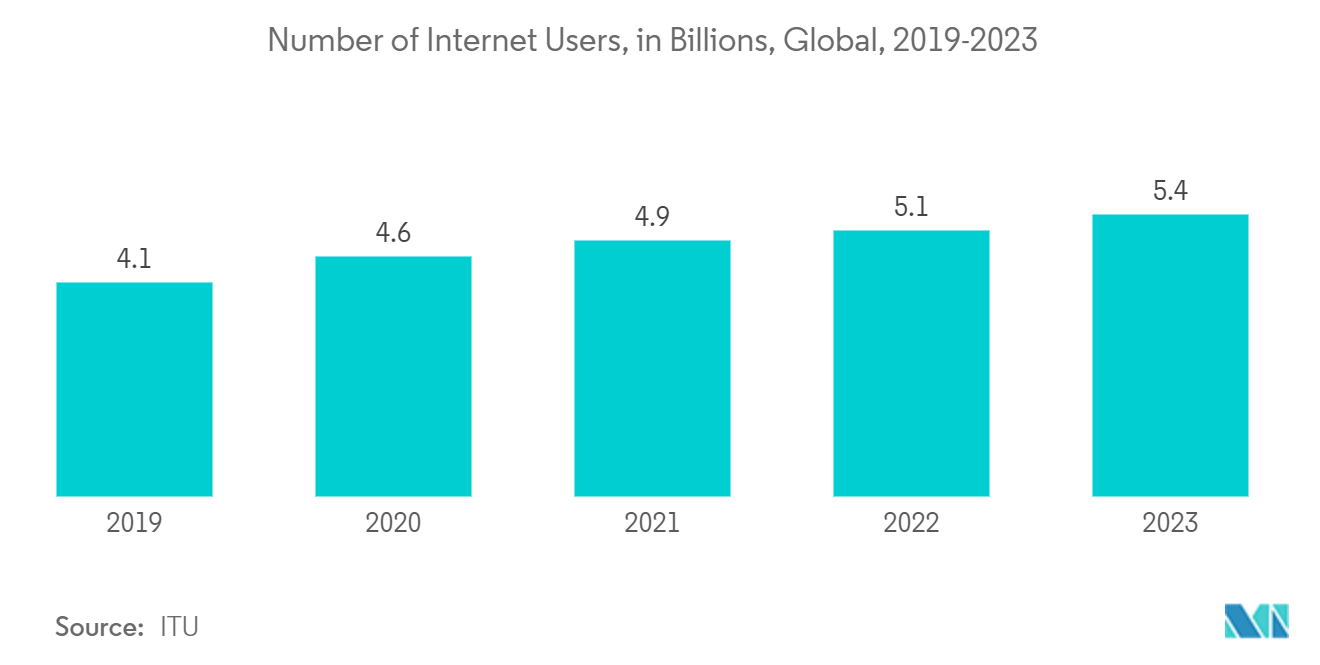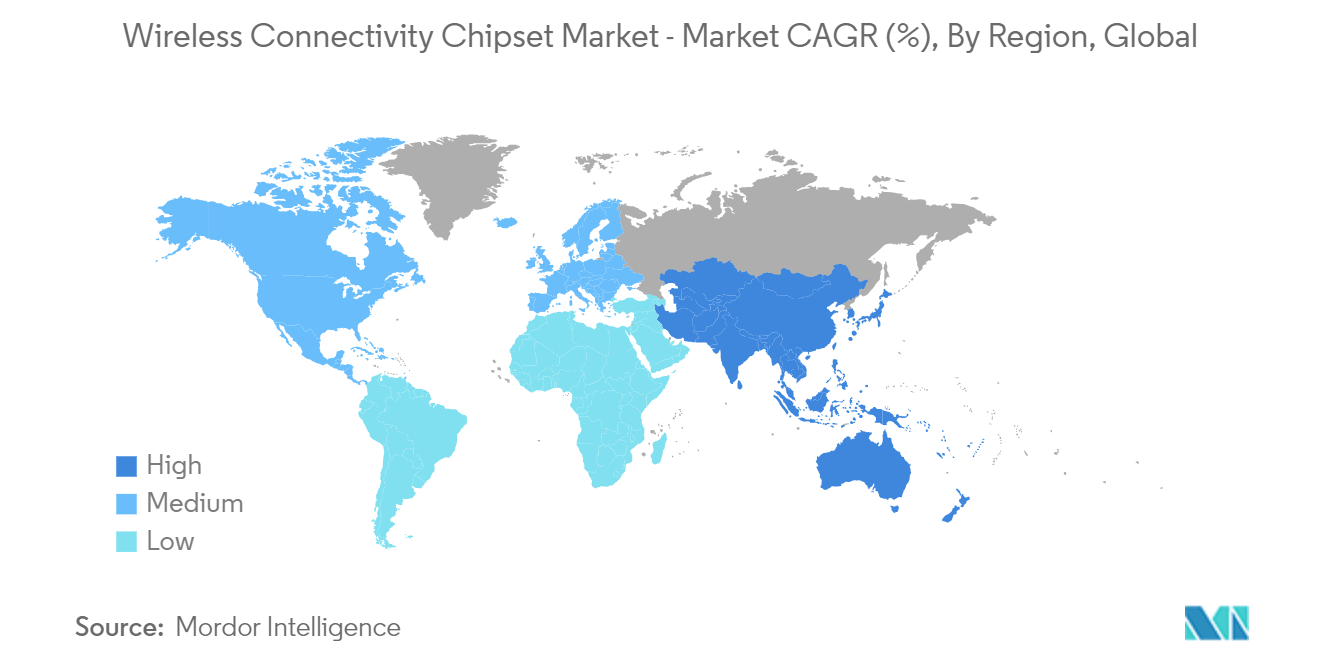Market Trends of Wireless Connectivity Chipset Industry
Wi-Fi Standalone Holds the Maximum Share of the Market
- The evolution of Wi-Fi network technology allows users to experience faster speeds and lower latency. It boosted the use of data-heavy services and applications. The significant rise in the volume of data carried by Wi-Fi networks has been primarily driven by customer demand for video and business and consumer moves to cloud services. This factor is expected to drive the need for a wireless 5G connection with fast and high-capacity networks.
- Internet penetration has scaled up in the modern world. According to the International Telecommunication Union, as of 2023, the estimated number of internet users worldwide was 5.4 billion, up from 5.1 billion in the previous year. This share represented 67% of the global population.
- According to a report from Snapchat, by 2025, around 75% of the global population and almost all smartphone users will be frequent AR technology users, out of which more than 1.5 billion are anticipated to be millennials. According to GSMA's Mobile Economy China, China will add around 340 million smartphone connections by 2025, with adoption rising to 9 in 10 connections, 1.5 billion in Mainland China, 12.3 million in Hong Kong, 1.9 million in Macao, and 25.7 million in Taiwan.
- In February 2024, Stage X, a South Korean company, announced that it was awarded a spectrum that will enable it to be the nation's fourth mobile carrier and planned to launch nationwide mobile network services in the first half of 2025. The company invested USD 462 million (KRW 612.8 billion) to deploy its 28 GHz 5G network across South Korea with a plan to build 6,000 base stations; it also involved the mandated installation standard for the 28 GHz frequency network.
- According to Ericsson's Mobility Report, the monthly average usage of mobile data in North America is expected to reach 49 GB per month for smartphones in 2026. A smartphone-savvy consumer base, video-rich applications, and large data plans will drive traffic growth. While there may be robust growth in traffic per smartphone in the near term, the adoption of immersive consumer 5G connections utilizing AR and VR is expected to lead to an even better growth rate in the long term.
- Lower latency is also poised to enable high-speed virtual and augmented reality video without glitches or delays. Mobile connectivity can be strengthened with small cell infrastructure, densifying 5G wireless signals and improving their movement through concrete buildings and walls. Small-cell antennas will also enhance wireless connection, supporting more devices on the same network simultaneously. Such developments are expected to drive the market.

Asia-Pacific is Expected to be the Fastest-growing Market
- The advent of 5G in the Asia-Pacific region accelerated wireless connectivity chipset deployment for high-speed network connectivity. Japan's government granted permission to install 5G base stations on 208,000 traffic lights across the country. Local administrations and operators shared the costs of using the traffic lights for 5G deployments. This will help with more solution deployment in less time, thereby circulating 5G connectivity faster throughout the country.
- Various Indian multinational educational technology companies, such as Byju's, provide their students with a tablet as a part of their educational curriculum to educate the students via digital methods along with the traditional methods of teaching. Such initiatives by the companies in the market are expected to promote further the demand for tablets, smartphones, and other consumer electronics in the market, thereby driving the market for wireless connectivity chipsets for tablets in the region during the forecast period.
- The increasing demand for internet services in the Asia-Pacific region is also expected to promote the adoption of wireless connectivity chipsets in the region. As per the prime minister of India, the launch of 5G internet services in India is expected to bring new economic possibilities and societal benefits to the nation.
- In addition, China is leading 5G development on a worldwide scale. More than 2.54 million 5G base stations have been built nationwide, and more than 575 million people now own 5G smartphones. The country further plans to invest CNY 1.2 trillion (USD 174.2 billion) in 5G network construction by 2025. This growing demand for a 5G stable network is accelerating the deployment of small-cell solutions in the country.
- Due to the increasing availability and affordability of 5G smartphones and the rapid adoption of smartphones in metropolitan and rural areas, 5G subscriptions are expected to rapidly increase to reach approximately 50 million in the region by the end of 2023.
- In February 2023, Network operators M1 and StarHub in Singapore formed an alliance named Antina. They extended their contract with Nokia to improve indoor and outdoor 5G coverage nationwide. To provide a better 5G user experience with high bandwidth, breakneck speeds, and minimal latency, Nokia will install its small cell solution called airscale indoor radio (ASiR), covering new buildings with multiple input, multiple outputs (MIMO) adaptive antennas.


